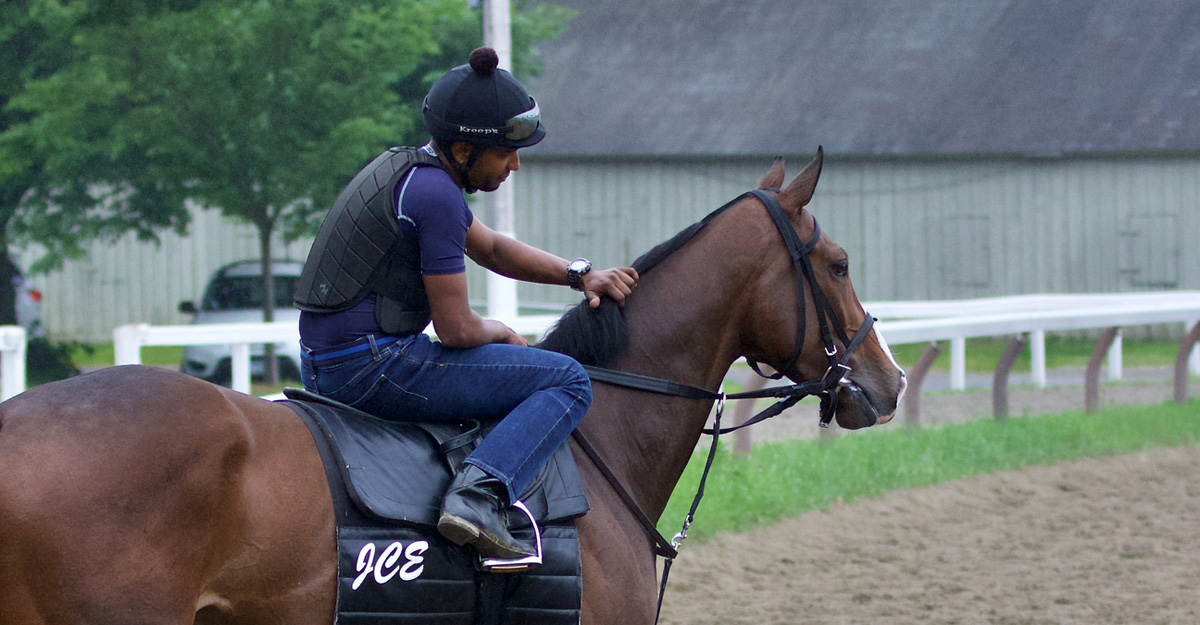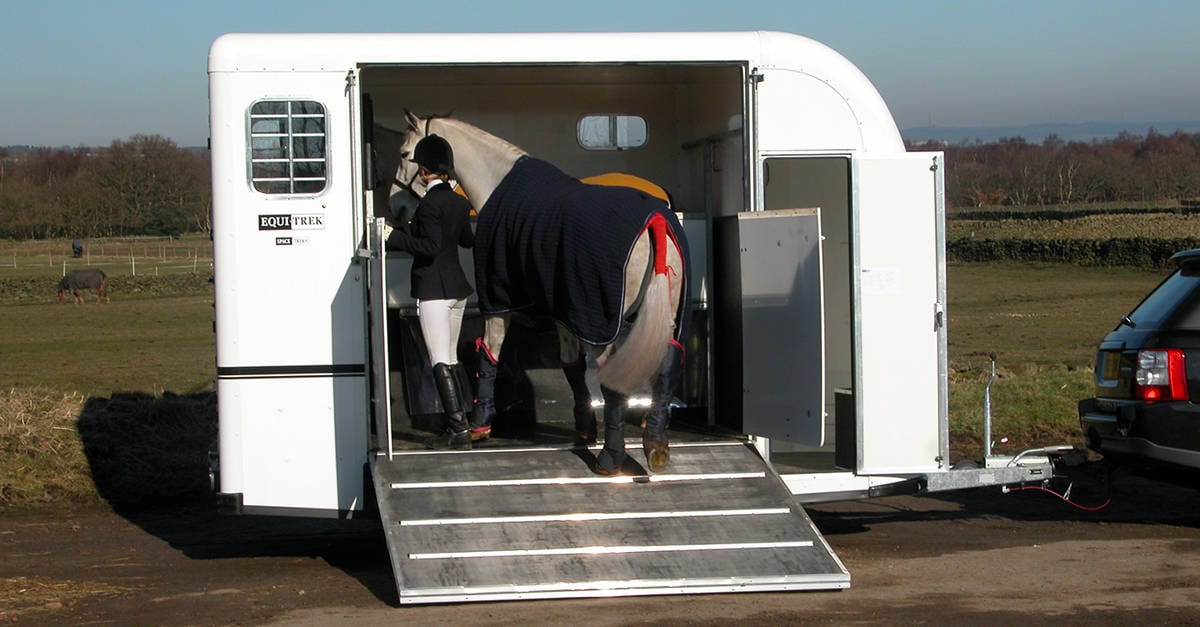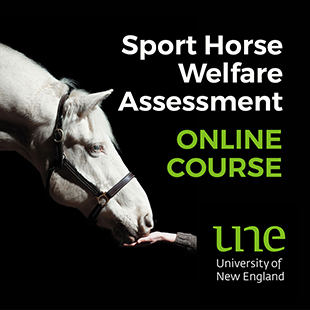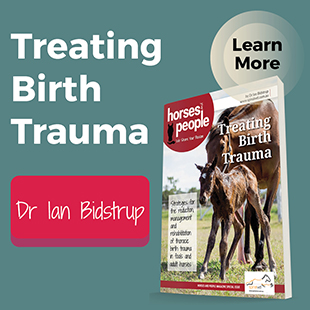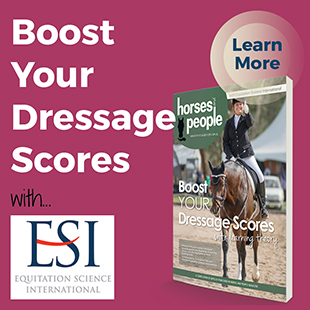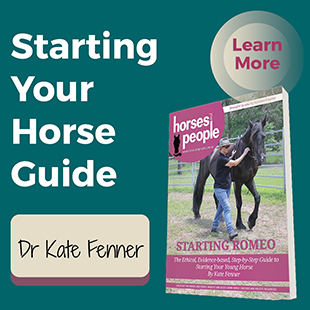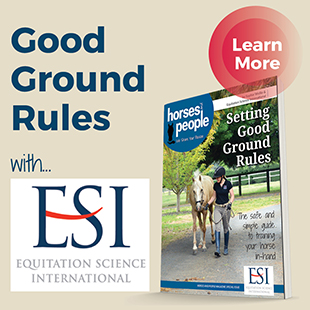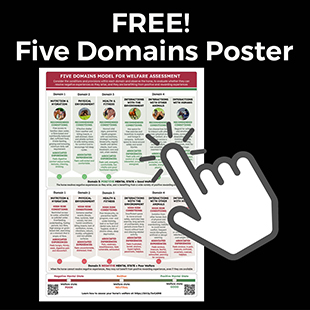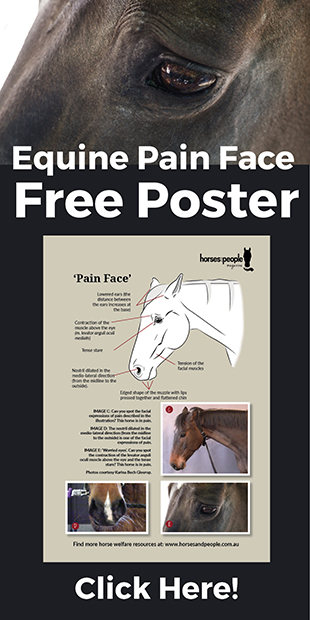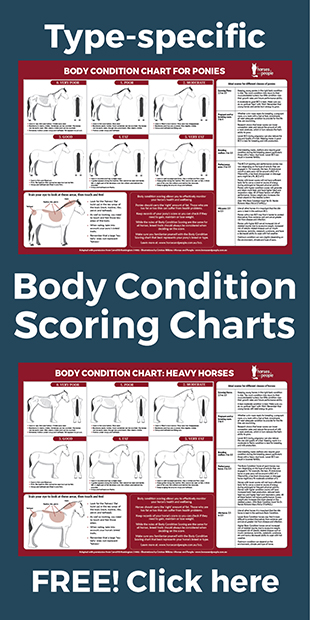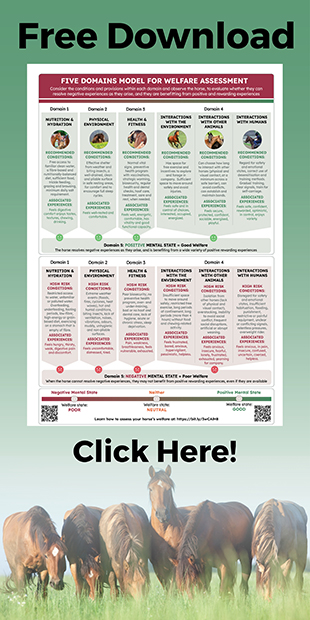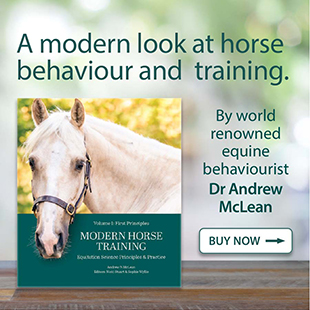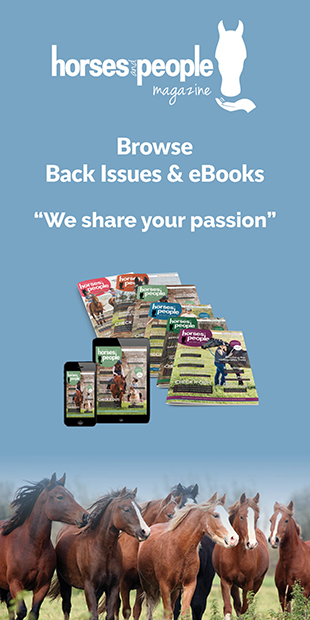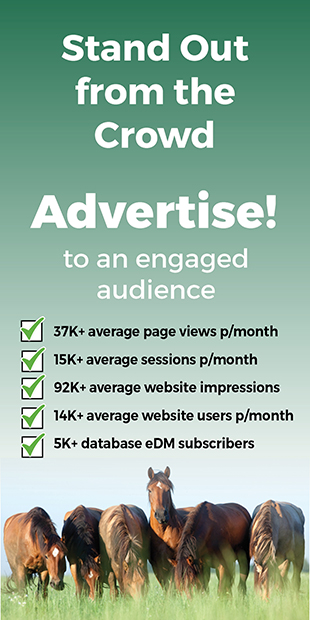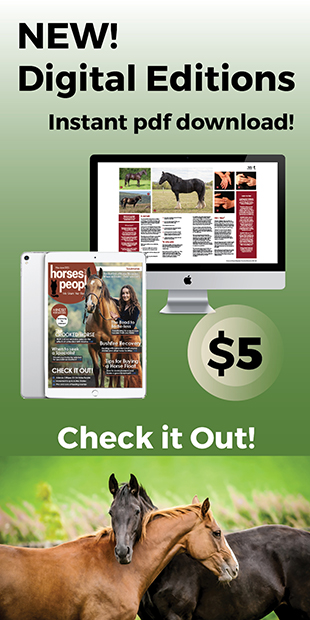Many features of the Thoroughbred Horseracing sector have been seriously challenged from an animal welfare viewpoint[1]. Their character is so explicit and striking that immediate action is required by implementing sector policy changes and updating codes of practice or welfare; if necessary, via binding regulations. Further research is not required.
The primary focus of these reforms must be the negative and positive subjective experiences (feelings) that are now known to underlie the welfare of sports’ horses; that is, focusing on the horses’ perspectives. Without these reforms, horse racing’s Social Licence to Operate (SLO) will continue to be seriously questioned.
At the same time, all sector leaders are advised to disseminate and apply the more detailed contemporary scientific understanding of equine welfare, aided by the Five Domains Model. A clear recommendation is to undertake equine welfare education at all levels. This would add to some already promising developments and a growing receptivity to adopt validated equine welfare knowledge.
Summary Structure of the 2020 Five Domains Model
- Domain 1: Nutrition
- Domain 2: Physical Environment
- Domain 3: Health
- Domain 4: Behavioural Interactions:
- With the Environment
- With Other Animals
- With Humans
- Domain 5: Mental State
Written here as a poem, each verse is structured as a three-line haiku. The haiku is a Japanese poetic form, in this case consisting of seventeen phonic syllables in a five-seven-five pattern. Traditionally, haiku evoke images of the natural world.
James Garnham is the penname of David Mellor. He is a Professor Emeritus aged 82 years, who draws on 55 years of post-PhD scholarly experience and advisory roles as a biomedical scientist, animal welfare scientist, and bioethicist. James has lived in Australia (24 years), Scotland (21 years), and now New Zealand (36 years so far).
The recommended educational initiatives are considered under the following headings:
The Problem
Participants in change
-
Stable hands
-
Trainers
-
Jockeys and other riders
-
Equine veterinarians
Up-to-date Welfare Perspectives
-
Negative experiences
-
Positive experiences
-
Aims of welfare management
Promising Developments
A Helpful Strategy
Postscript
Caveats
——
The Problem
Recreational
and professional horse use
is very diverse.
In all sectors, the
stated top priority
is for horse welfare.
Keeping good welfare
is often hindered by now
outdated knowledge.
New knowledge questions
the use of many current
standard practices.
When competing, these
practices are applied to
almost all horses.
Consistent ranking
requires all horses to be
treated the same way.
.
Change is slow with those
intransigently wedded
to these practices.
And, with those afraid
to lose power, influence,
prestige and money.
Currently these folk
control most groups managing
equine sports’ standards.
Thwarted thus, other
folk will continue to work for
the better standards.
They will persist in
advocating for change to
adopt improved ways.
Sports’ horse welfare will
continue to be very
closely scrutinized.
Without improvement,
SLO will continue
to be under threat.
Indeed, the present
threats to SLO show no
signs of abating.
Participants in Change
Stable Hands
Welfare “blind spots” are
today’s normalized welfare-
harming practices.
Stable hands, often
empathetic, can become
close to their horses.
They identify
with them while dispensing care
nearly every day.
They bond with them, both
individually and
emotionally.
Their closeness may lead
them to see worrisome “blind
spots”, but say nothing.
Their low rank could mean
they’d be ignored or labelled
as troublemakers.
To question the “blind
spots” they would need at least some
knowledge of welfare.
Plus, how to manage
welfare using established
welfare indices.
Gaining such knowledge
via welfare-led training
is now possible.[2,3]
Sector bosses should
encourage stable hands to
complete these courses.
Encouraging such
training would anticipate
expected changes.
Thus prepared, staff would
be well placed to operate
new, improved standards.
Trainers
Most racehorse trainers
focus on financial
strength and profits.
This accords with a
preoccupation of the
whole racehorse sector.
Their training methods
are sector-approved and are
widely adopted.
So, most are aligned
with currently flawed welfare
standards and ideas.
Revising them, based
on now new knowledge, will help
to prepare for change.
This would help trainers
to flexibly adopt the
updated standards.
They might also be
encouraged to adopt key
roles in leading change.
Some trainers apply
welfare friendly methods to
their racehorses now.
They too could become
major influencers in
introducing change.
Jockeys and other riders
Jockeys could also
benefit from updating their
welfare knowledge.
This, to prepare for
change and the adoption of
new welfare standards
Their example, in
being visible, could be
most influential.
Likewise with other
equestrians whose welfare
actions are noted.
Equine Veterinarians
New cohorts of vets
now have welfare knowhow which
is right up to date.
This equips them to
put welfare first to meet their
Professional Oath.
Ill-informed vets will
be replaced by vets who have
up-to-date knowledge.
They could still upskill
and participate in the
coming transition.
When welfare-informed,
vets can promote positive
science-based changes.
Their profession could
give them great authority
on welfare matters.
They could become prime
movers, dispensing needed
up-to-date advice.
When they accept such
leadership roles they should be
fully supported.
Up-To-Date Welfare Perspectives
Negative experiences
Old view: a racehorse
has good welfare because it
is healthy and fit.
Good welfare is much,
much broader than just having
health and fitness.
Welfare is strongly
focused on what animals
can experience.
Thus, there are clear signs
that healthy, fit horses can
be miserable.
Misery refers
to intensely unpleasant
experiences:
Pain, fear, breathlessness,
panic, helplessness, weakness,
exhaustion and thirst;
Hunger, nausea,
malaise, debility, cold,
stress, overheating;
Boredom, loneliness,
frustration, anger,
fright and shock.
All are now known to
be experienced by fit
and healthy horses.
Positive experiences
Horses clearly seek
and can enjoy rewarding
experiences:
Pleasant tastes, smells, sounds,
textures; sating of hunger,
and quenching of thirst;
Comforts of good health,
unimpeded movement
and physical strength;
The company and
security of bonding
with preferred others;
Protecting, rearing,
educating and playing
with foals in their band;
Active engagement
while exploring and checking
their outdoor ranges;
Showing agency
by “choosing”, “controlling” and
facing “challenges”.
All horses enjoy
these experiences when
given the chance.
Aims of Welfare Management
Both negative and
positive welfare states are
now well-recognised.
The first focus was
to keep negative states as
low as possible.
Now, welfare standards
have twin aims: “keep what’s bad low”;
“make the good better”.
These aims can best be
promoted by using the
Clear descriptions of
Five Domains assessments are
easily accessed. [5,6]
Also, a hand-held
App, the Mellorater, is
now available. [7]
Promising Developments
NZ Thoroughbred
Racing was first to adopt
the Five Domains Model. [8,9]
Many other groups
with equine welfare concerns
have now done the same.[10]
Other adopters
of the Model have wider
species interests. [11]
Most have genuine
motives to improve welfare,
and provably so.
Still, we must note and
expose “cynical welfare
washing lip service.”
A Helpful Strategy
Resistant groups can
view welfare advocates as
very threatening.
Mistakenly seen
as animal rights zealots,
resistance strengthens.
The Model can help
allay fears when focused on
what’s being done well.
Thus, reassured that
good efforts are noted, most
discussants relax.
Understanding the
“good” naturally draws out
what is “bad” and why.
The Model keeps things
neutral and safe by pointing
towards solutions.[12]
These are practical,
corrective strategies for
enhanced management.
The aims: to reduce
“bad” experiences, and
provide for “good” ones.
The first four domains
focus on measurable
management outcomes.
Repeated Model
assessments can then reveal
change in each domain.[7]
These assessments are
specific within the first
four welfare domains.
Inferred feelings from
“bad” and “good” changes are viewed
in the fifth domain.
Domains 1 to 4
give objective data; 5,
the inferred feelings.[2,4]
These feelings direct
choices; driving them; aiming
for welfare success.
Postscript
Sector-wide training
of this type will benefit
both horse and rider.
Standards focused on
horses’ experiences
improve their welfare.
They increase rider
safety and improve horses’
event performance.
Clear evidence that
welfare is paramount is
very persuasive.
Caveats
Note, avoidance of
lip service welfare washing
is imperative.
Likewise, sector-wide
regulatory controls
should be put in place.
These are required to
address currently hidden
welfare challenges.[1]
All will be required
to secure SLO for
competing horses.
References
1. Thoroughbred Horse Welfare Challenges: From Rape to Relegation, a poem by James Garnham, Horses and People (2024): https://horsesandpeople.com.au/thoroughbred-welfare-challenges-from-rape-to-relegation/
2. Applying the Five Domains Model to the Welfare of Sport and Recreation Horses. A short course available internationally via the University of New England, NSW, Australia: https://www.openlearning.com/une/courses/une-equine-course/?cl=1
3. Equiculture Sustainable Horsekeeping. A short course available internationally via the University of New England, NSW, Australia: https://www.openlearning.com/une/courses/sustainable-horse-keeping/?cl=1
4. Mellor, D.J., Beausoleil, N.J., Littlewood, K.E., McLean, A.N., McGreevy, P.D., Jones, B. and Wilkins, C. (2020). The 2020 Five Domains Model: Including Human–Animal Interactions in Assessments of Animal Welfare. Animals 10 (10), 1870; doi: 10.3390/ani10101870
5. World Horse Welfare: Using the 5 Domains to Assess Horse Welfare; accessed 25 August 2024: https://storage.googleapis.com/worldhorsewelfare-cloud/2023/12/5d1e6a99-the-5-domains-of-animal-welfare-new-121223-v3.pdf
6. Wilkins, C. (2024). The Five Domains of Horse Welfare, Horses and People: https://horsesandpeople.com.au/the-five-domains-of-animal-welfare/
7. Wilkins, C.L.; McGreevy, P.D.; Cosh, S.M.; Henshall, C.; Jones, B.; Lykins, A.D.; Billingsley, W. (2024). Introducing the Mellorater—The Five Domains Model in a Welfare Monitoring App for Animal Guardians. Animals 14, 2172. https://doi.org/10.3390/ani14152172
8. NZTR (2019). Thoroughbred Welfare Assessment Guidelines. New Zealand Thoroughbred Racing, 106-110 Jackson Street, Petone, Wellington, New Zealand.
9. Mellor, D.J. and Burns, M. (2020). Using the Five Domains Model to develop Welfare Assessment Guidelines for Thoroughbred horses in New Zealand. New Zealand Veterinary Journal 68, 3. 150-156.
10. List of Five Domains adopters at: https://www.openlearning.com/une/courses/une-equine-course/?cl=1
11. List of Five Domains adopters at: https://www.openlearning.com/une/courses/une-equine-course/?cl=1
12. Mellor, D.J. and Burns, M. (2020). Using the Five Domains Model to develop Welfare Assessment Guidelines for Thoroughbred horses in New Zealand. New Zealand Veterinary Journal 68, 3. 150-156.



